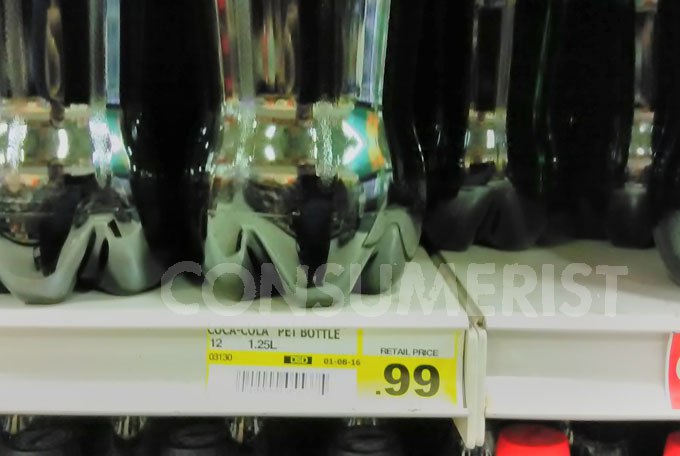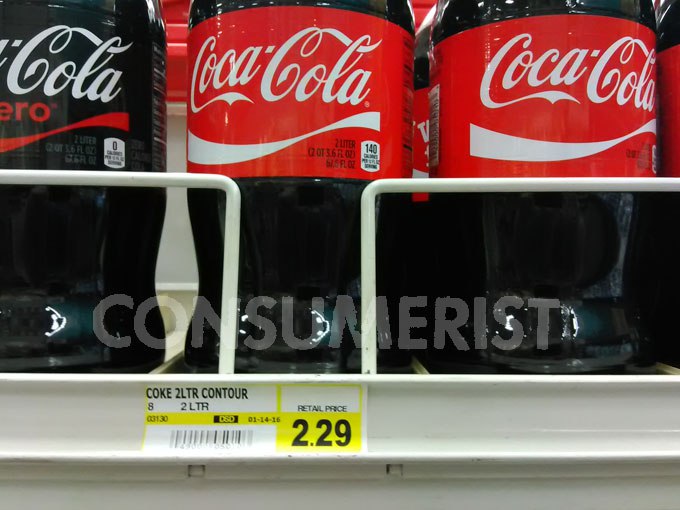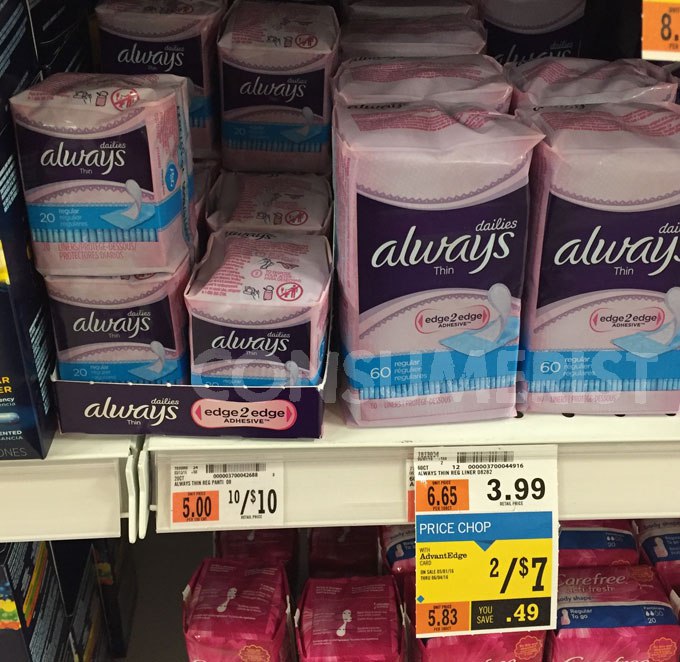We began calling certain types of fuzzy pricing schemes “Target math” some years ago, since they turned up most often at Target stores. When this happens, unit pricing goes awry, and it costs more per unit to buy a larger quantity of the same thing. For example, when a two-pack of lotion costs almost a dollar more than two individual bottles.
For example, reader PF. found this example at a Shop ‘n’ Save store. You definitely save… if you buy the 1.25-liter bottles. They don’t even appear to be on sale, which explains some instances of fuzzy math.


That’s $.79 per liter for the 1.25 L bottle, and $1.14 for the 2-liter bottle.
Reader Beth noticed these panty liners at her local Price Chopper. The sale on the right caught her eye, which brought the price down to $3.50 for a pack of 60. Then she noticed the mini packages on the left, which have 20 for only $1.

Even though the 60-pack version was on sale, it was still cheaper to buy three packages of the smaller version than a single package of the larger one.
Over at Whole Foods, meanwhile, a followers of Consumerist’s Twitter account noticed that the pricing on Ricola cough drops varied.
The explanation for this is partly that they were in different parts of the store, but note the unit pricing on each product. The smaller package with the better unit price is marked in ounces, and the larger package with the per-drop price shows the price per unit.

